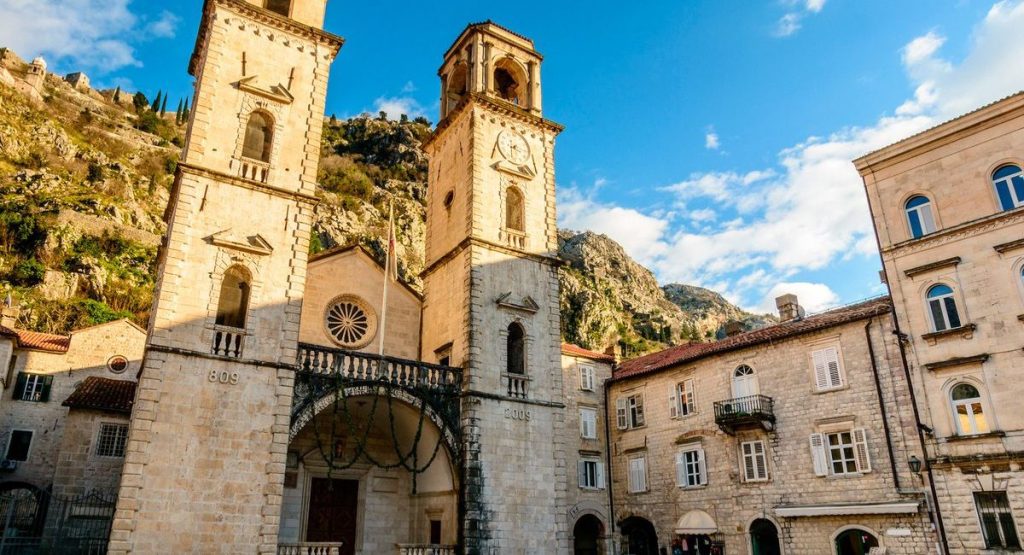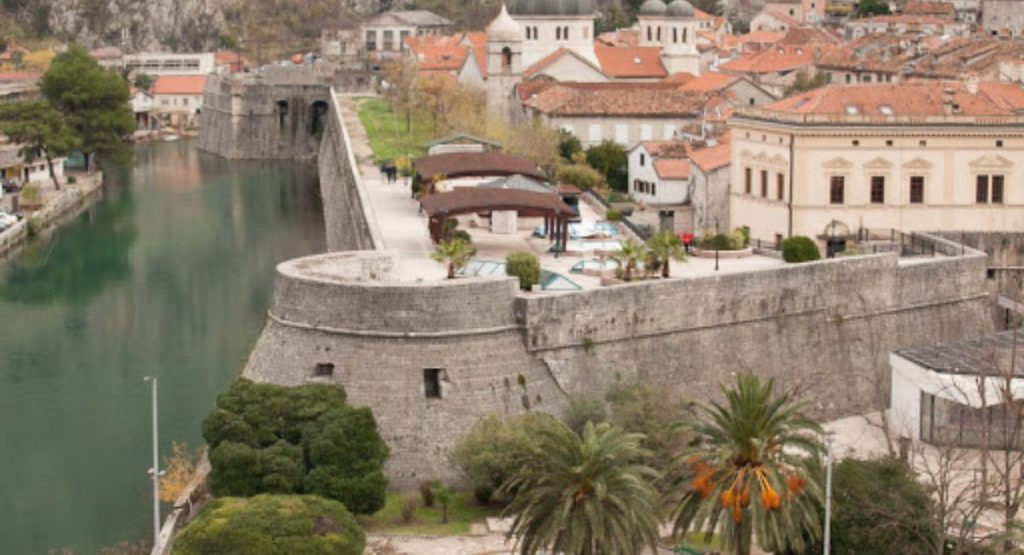Introduction: Why Kotor Feels Like Stepping Into Another World
Have you ever walked into a place that feels like it belongs to another century—where cobblestone streets echo with history, stone walls rise around you, and the smell of the sea mixes with the sound of church bells? That’s Old Town Kotor in Montenegro. Nestled at the end of the Bay of Kotor, this UNESCO World Heritage Site is one of the most enchanting towns in the Adriatic, often compared to Dubrovnik but with a quieter, more authentic charm.
If you’re planning a trip to Montenegro, this article will be your complete guide to exploring Kotor’s Old Town. You’ll learn about its fascinating history, top attractions, hidden corners, hiking routes, food culture, travel tips, mistakes to avoid, and answers to common questions. By the end, you’ll feel like you know Kotor before you even step foot there—and you’ll be ready to make the most of your visit.
What Is Old Town Kotor?
Old Town Kotor, or Stari Grad Kotor, is a fortified medieval town located on the Adriatic coast of Montenegro. Enclosed by massive city walls that stretch up into the surrounding mountains, it’s often described as one of the best-preserved medieval towns in the Balkans. With roots tracing back to Roman times, Kotor has been influenced by Illyrians, Byzantines, Venetians, and Ottomans, each leaving their mark on the architecture, culture, and daily life.
Unlike some historic centers that feel like open-air museums, Kotor is still a living town. People reside within the walls, cafés hum with conversation, and laundry hangs from windows above narrow alleys. This blend of authenticity and heritage makes it one of Europe’s most unique destinations.
For Further Information: Click Here

A Brief History of Old Town Kotor
To really appreciate Kotor, you need to know a little about its past.
- Roman Era (168 BC – 476 AD): Kotor, then known as Acruvium, was an important Roman settlement due to its strategic position on the bay.
- Byzantine Period: After Rome’s fall, the Byzantines fortified Kotor, adding early layers of defense.
- Medieval Times: Between the 9th and 15th centuries, Kotor became a wealthy trading port. The Venetian Republic controlled the town for nearly 400 years (1420–1797), leaving behind the distinct Venetian Gothic architecture seen today.
- Earthquakes and Resilience: The town survived numerous earthquakes, most devastating in 1667 and 1979. After the 1979 quake, UNESCO placed Kotor under protection and funded restoration.
- Modern Day: Today, Kotor blends its medieval legacy with a vibrant tourism industry, drawing travelers who want history, culture, and natural beauty all in one.
Why Visit Old Town Kotor?
So why should you make space in your itinerary for Old Town Kotor? Here are some compelling reasons:
- A Living Medieval Town: Unlike Dubrovnik, Kotor still feels residential and intimate.
- UNESCO World Heritage Site: It’s officially recognized for its universal cultural value.
- Stunning Natural Setting: The Bay of Kotor, often called Europe’s southernmost fjord, creates an unforgettable backdrop.
- Affordable Travel: Compared to neighboring Croatia, Montenegro offers better value for food, accommodations, and activities.
- Compact and Walkable: You can explore most of Kotor in a day, yet it’s rich enough to keep you engaged for longer.
Top 5 Things to Do in Old Town Kotor
1. Wander Through the Maze of Cobblestone Streets
The best way to experience Kotor is simply to get lost. Every turn reveals something new: tiny piazzas, stone archways, flower-decked balconies, or cats lounging on stairways. The Old Town is car-free, making it peaceful and perfect for aimless wandering.
Travel Tip: Start at the Sea Gate (the main entrance) and slowly work your way inward. Keep your eyes open for architectural details like Venetian lions carved into walls.
2. Visit Kotor Cathedral (Cathedral of Saint Tryphon)
Built in 1166, this Romanesque cathedral is dedicated to Saint Tryphon, Kotor’s patron saint. Inside, you’ll find intricate frescoes, gold-plated altars, and relics dating back centuries. The cathedral is one of the most important monuments in Montenegro.
Did You Know? The cathedral has survived multiple earthquakes, with parts rebuilt each time. The mismatched towers are a result of different construction eras.
3. Climb the Kotor Fortress Walls (San Giovanni Fortress)
If you only do one active thing in Kotor, make it this. The fortress walls zigzag up the steep mountainside behind the town. The climb takes about 1–1.5 hours, but the views over the bay are breathtaking.
- Height: Around 1,200 steps
- Best Time: Early morning or late afternoon to avoid heat and crowds
- Entry Fee: Small fee, but worth every penny
At the top, you’ll feel like you’re standing on the edge of history, overlooking one of Europe’s most dramatic bays.
4. Explore Kotor’s Squares and Palaces
Old Town Kotor is dotted with charming piazzas, each with its own character:
- Square of Arms: The largest square, often bustling with cafés and markets.
- Trg od Oružja: Home to the famous Clock Tower (1602) and a symbol of Kotor.
- Pima Palace & Grgurina Palace: Architectural gems that tell stories of Kotor’s noble families.
5. Visit the Maritime Museum of Montenegro
Kotor has a rich maritime heritage, once being a strong naval hub. The Maritime Museum displays ship models, weapons, and portraits of famous captains. It’s a must-visit for history lovers and gives insight into Kotor’s identity as a seafaring town.

Hidden Gems in Old Town Kotor
Beyond the main attractions, Kotor hides plenty of surprises:
- Cats Museum: Yes, Kotor is famous for its cats. This quirky museum is dedicated to feline history and art.
- Secret Courtyards: Peek through archways, and you’ll often find peaceful corners locals use for socializing.
- Local Bakeries: Stop for fresh burek (savory pastry) from tiny family-owned bakeries tucked into the walls.
Hiking Beyond the Walls: The Ladder of Kotor
For adventurous travelers, hike the Ladder of Kotor, an old caravan path leading up into the mountains. Unlike the fortress climb, this trail is free and offers sweeping views of the bay. It’s longer and less crowded, ideal if you want a more rugged experience.
Food and Drink in Kotor Old Town
Montenegrin cuisine is a mix of Mediterranean and Balkan flavors. In Kotor’s Old Town, you’ll find cozy konobas (traditional taverns) and modern restaurants.
- What to Try: Njeguški pršut (smoked ham), local cheese, seafood risotto, grilled fish, and rakija (fruit brandy).
- Best Spots: Outdoor cafés along squares for people-watching, or hidden taverns for a quieter meal.
- Budget Tip: Bakeries sell hearty snacks for just a couple of euros.
Practical Travel Tips for Visiting Old Town Kotor
- When to Visit: Spring (April–June) and autumn (September–October) are ideal. Summers are hot and crowded, especially with cruise ships.
- How Long to Stay: One full day covers highlights, but staying overnight lets you experience the quieter evenings.
- Getting There: Easily reached from Podgorica, Dubrovnik (Croatia), or Tivat Airport.
- Currency: Euro (€).
- Language: Montenegrin (but most locals in tourist areas speak English).
Common Mistakes to Avoid
- Visiting Only During Cruise Ship Hours: Kotor feels overcrowded midday. If possible, stay overnight.
- Skipping the Fortress Hike: Some travelers avoid the climb, but it’s the highlight of Kotor.
- Rushing Through: Don’t just tick off attractions—take time to soak in the atmosphere.
- Eating at Tourist Traps: Venture beyond the main square for better, cheaper food.
FAQs About Old Town Kotor
Is Kotor worth visiting compared to Dubrovnik?
Yes. While Dubrovnik is larger and more famous, Kotor offers a more intimate and authentic experience, with fewer crowds and lower prices.
How long does it take to explore Old Town Kotor?
You can see the highlights in 3–4 hours, but a full day lets you explore at a relaxed pace.
Is the climb to Kotor Fortress difficult?
It’s steep but manageable if you’re reasonably fit. Bring water, good shoes, and take breaks.
Are cats really everywhere in Kotor?
Yes—cats are part of Kotor’s identity. You’ll see them lounging in squares, alleys, and even souvenir shops.
Can you stay inside Old Town Kotor?
Absolutely. There are boutique hotels and guesthouses within the walls, though they book up fast.
Conclusion: Why Old Town Kotor Will Stay With You
Old Town Kotor is more than just another medieval town—it’s a place where history, culture, and nature come together in one of Europe’s most breathtaking settings. Whether you’re climbing fortress walls, sipping coffee in a stone piazza, or watching the sunset over the bay, Kotor leaves a lasting impression.
If you’re looking for a destination that combines authenticity, beauty, and history without overwhelming crowds, Old Town Kotor is one of the best choices you can make. Spend a day—or better, a few—and let this Adriatic gem work its magic on you.

